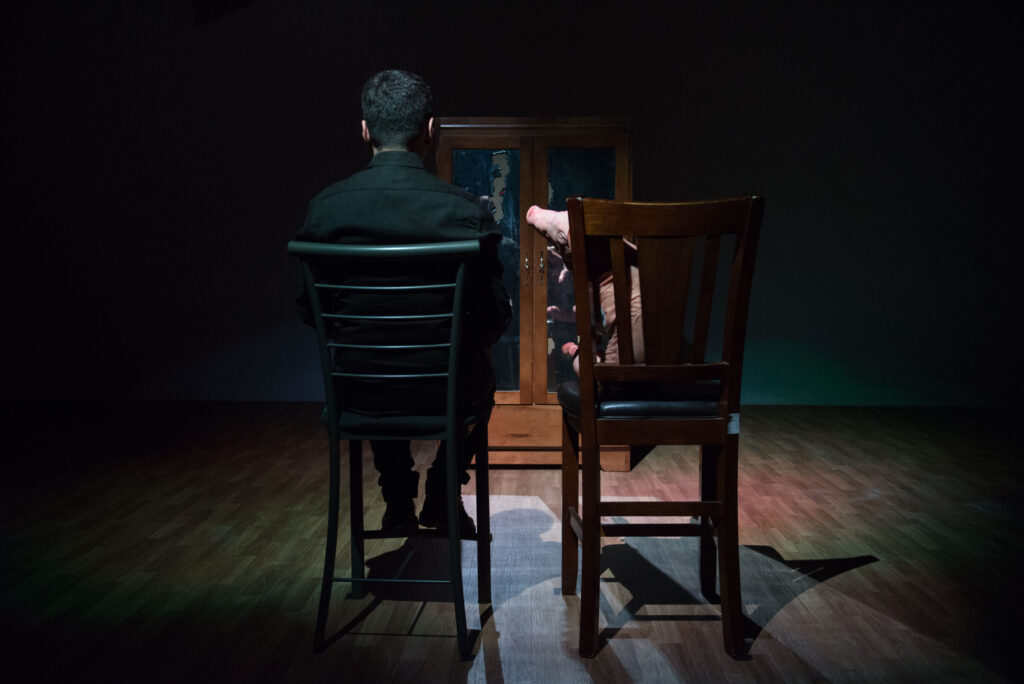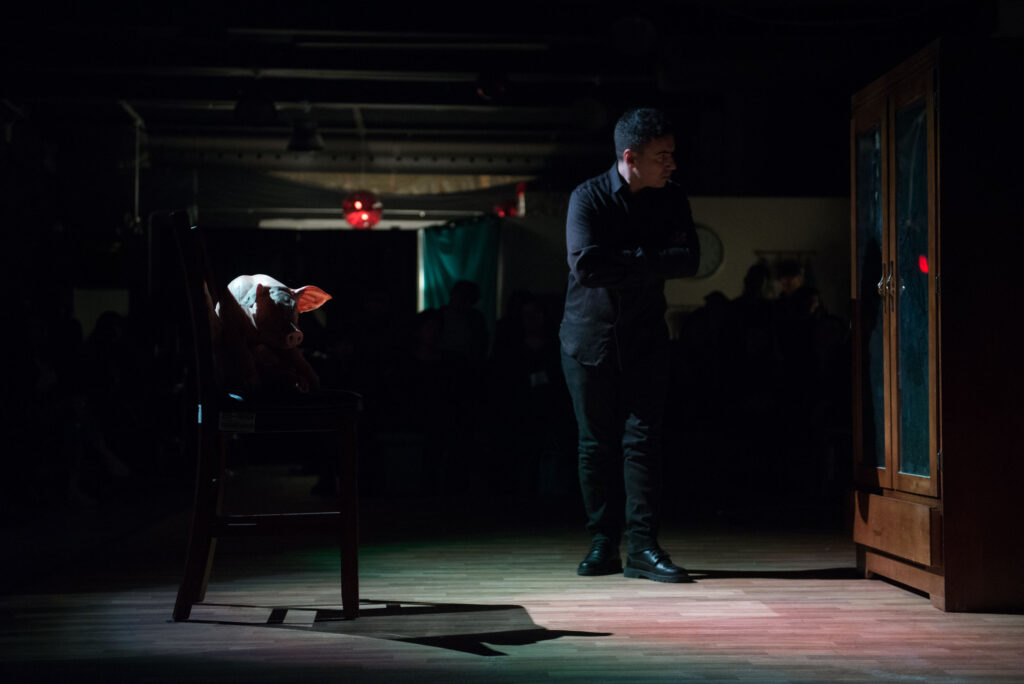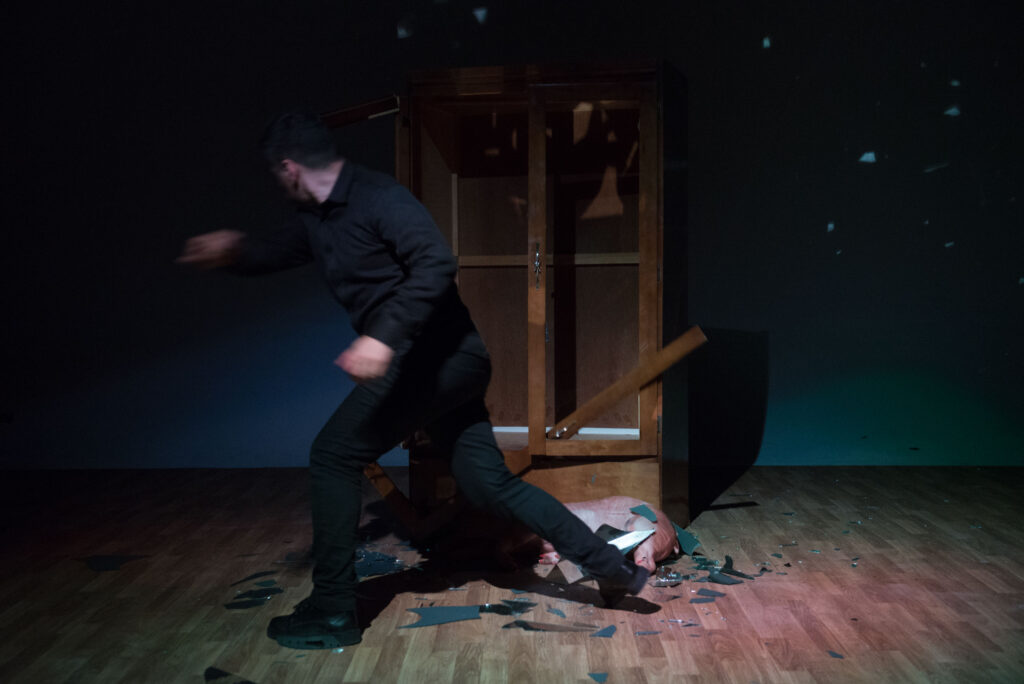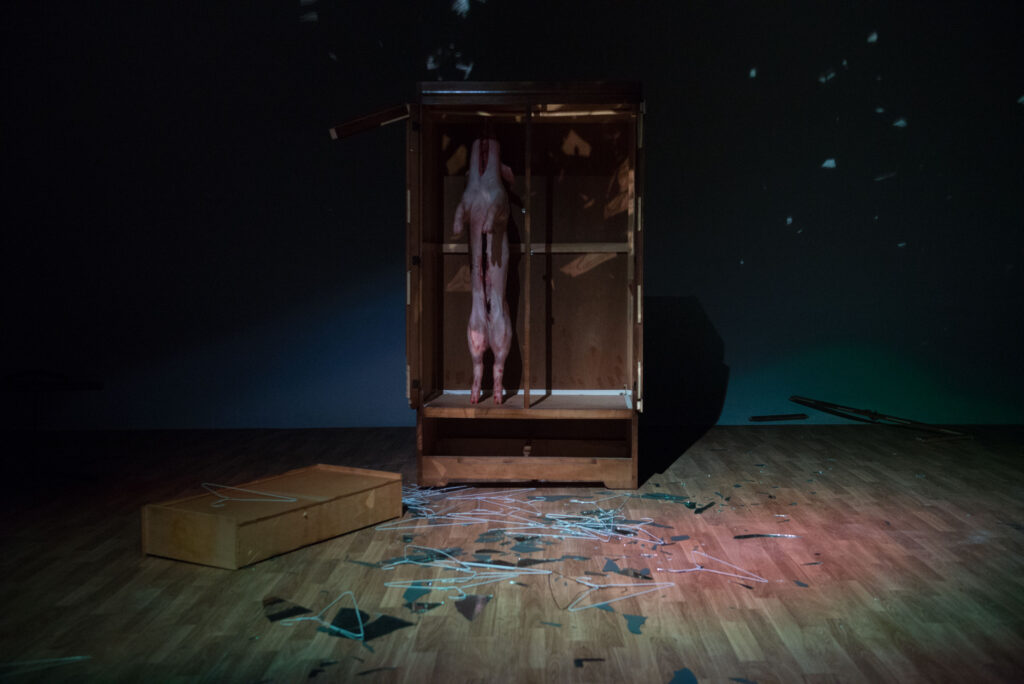By Michelle Lacombe
Les Daré Lo Que Quieren ( I will give them what they want)

I will preface this post by clearly stating that I have a really difficult time with what I consider to be artistic displays of destructive and violent masculinity. I don’t care if it’s ironic or poetic. I am not objective on this. So know that I spent the evening struggling to reconcile my role as a blogger (and my responsibility to the artist) and my own feminist values.
An old wardrobe with a mirrored front sits in the middle of the space, two tall chairs face it and the lights in the room are dimmed. The scene is dramatic and, for the first time this evening, it is silent. When Silvio De Gracia walks into the space he has a juvenile pig carcass slung over his right shoulder. He does not carry it with care, it reads as an accessory. He pauses in front of the mirror, slowly exploring through his gaze both himself and the animal. I immediately think about Nate Hills’ Trophy Scarves project and then worry that I am moving into a bad space with this work. I reposition myself in an attempt to refresh my perspective both literally and figuratively.
The performance itself is quite simple. In large part, it consists of the artist engaging with the animal through their reflections in the mirror. The action is sober and void of any frivolity. These are qualities I typically appreciate in performance. Throughout the piece, the artist and pig are seated with their backs to the audience and because the mirror is dirty and peeling, the subtleties of his gaze are difficult to see. What I can see is his grip on the animal’s face, holding it tightly in place as he guides them through their soft choreography. I recall my grandfather feeding my grandmother when she had Alzheimer’s; the unintended violence of a man who has never been taught how to execute bodily care attempting to do so.
As De Gracia moves them in tandem, I feel like we are expected to read them as one body but I note that the mirror in which he views his actions is divided down the middle, where the wardrobe doors meet. The reflected artist and the reflected animal are clearly not one and I, for whatever societal or personal reasons, identify with the pig. At one point De Gracia stands and aggressively pushes aside his chair. From this point forward the work, predictably, deteriorates into increasing aggression until the carcass is used to smash the mirrors and the wardrobe. At the end, the body is hung in the wood shell and the artist leaves.
In his descriptive text of the work, De Gracia talks about using his body in ways that “border on self-aggression”. However, while his violence may metaphorically be directed onto himself, in practice it is externalized and targets both the juvenile animal and the domestic furniture. This is not an adult pig, which would provide a more equal opponent. It is a child in scale, and, sliced open and caressed, it is feminized. He has constructed this scene to dominate over a symbol of the bedroom and a body that is very different than his. And while he is successful in his portrayal, De Gracia’s masculinity is not a subjectivity that I feel needs more space or attention. Society is already full of it. So, while it was a well executed performance and De Gracia is clearly a skilled artist who has mastered dramaturgy, to give voice to the exploration of male aggression at play in this work is not something I find easy. Enough violence already.




